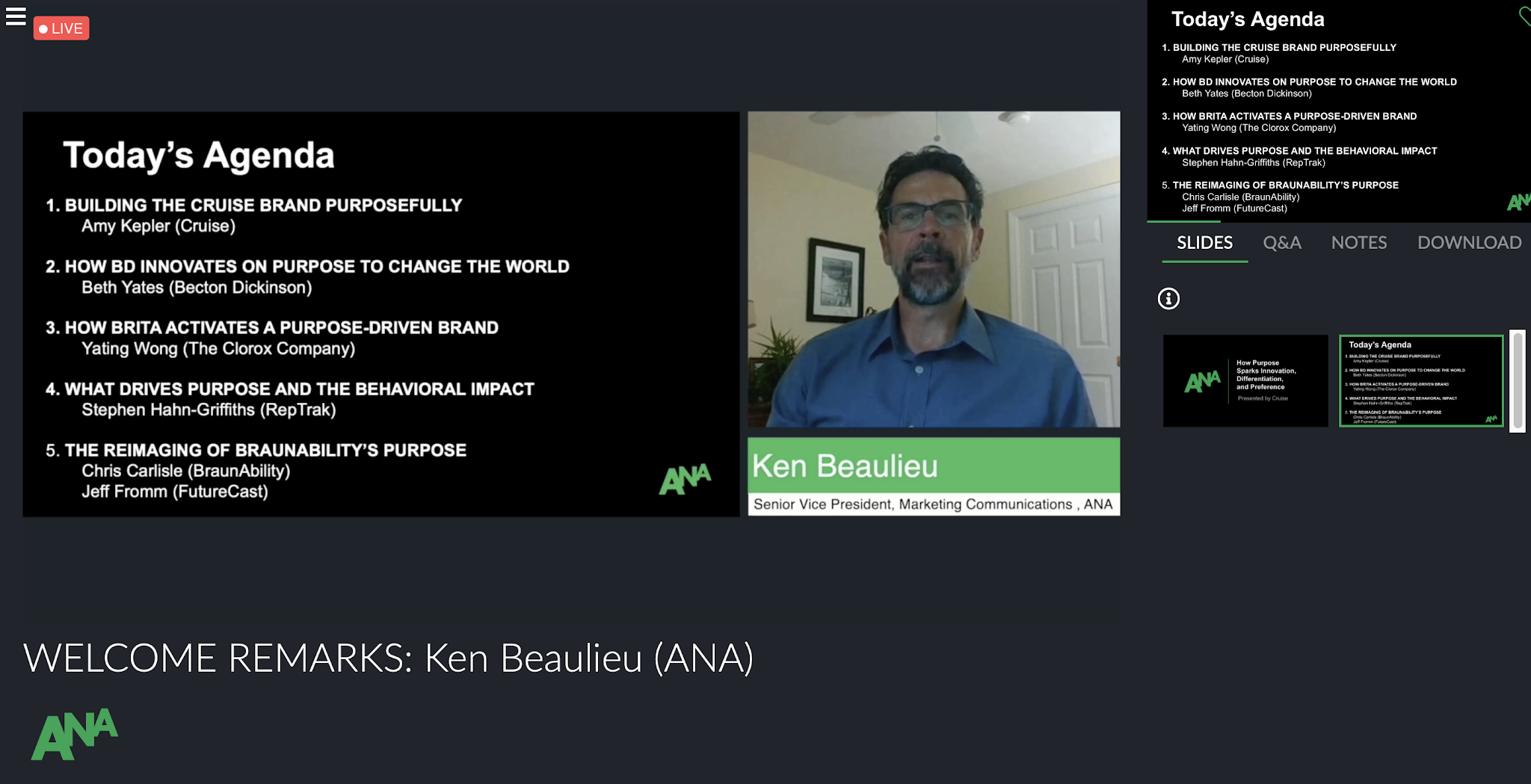The ANA’s “How Purpose Sparks Innovation, Differentiation, and Preference” Conference | Yasin Usta
As a person who came from a journalistic background, purpose-driven marketing was one of the few fields where I felt at home. Having worked as a reporter and editor, I talked to executives who loved explaining how their brands go beyond making a profit by taking a stand on important social and environmental issues. I found the concept of brand purpose especially relatable, as I personally believe that it is vital to keep one’s overarching purpose in mind to make it the predominant driving force of decision making. I knew that purpose and financial growth were intertwined, but touching people’s lives has always been one of my personal goals. The Association of National Advertisers’ (ANA) virtual “How Purpose Sparks Innovation, Differentiation, and Preference” conference on June 18, 2020, was a great opportunity for me to see how brands question their values and priorities to uncover their core purposes and activate them.
1-Not Every Brand Should Be a Part of Every Conversation
It is vital for purpose-led brands to participate in cultural and social conversations relating to their purposes. However, trying to be a part of every important conversation leads to diluting the purpose instead of strengthening it, and can seem disingenuous to consumers. A successful strategy is not only about what to do but also what not to do. A well-defined purpose that is placed at the core of strategy gives employees a better understanding of the brand’s values and helps them determine which conversations the brand should be a part of.
In their presentations, Cruise’s Chief Communications Officer Kristine Boyden and Director of Marketing Amy Kepler highlighted how Cruise's purpose set a framework for engagement. Revealing that the purpose was centered around driving cities forward, Cruise built a focused agenda to engage with the conversation within the cities, starting with San Francisco. Understanding the tension between the challenges of city life and the quality of life that city dwellers seek, the Cruise team was able to appropriately select the conversations that Cruise should participate in. Working closely with the local organizations and community groups, Cruise has been engaging with the conversations that big cities face today, such as air quality, safety, and accessibility. Boyden stressed how brand purpose is related to engagement, saying “not every brand should be a part of every conversation.”
2- Purpose-Driven Marketing is Not Glamorous
Purpose-driven marketing is getting more and more popular as marketers see the opportunities that purpose-led brands benefit. However, revealing an authentic, true, and meaningful purpose and activating it through the organization and customers is not easy. The more brands communicate their purposes, the harder it gets to be truly authentic in the eyes of customers.
In her presentation, Brita’s Director of Marketing Yating Wong talked about the parts of the brand purpose that are not as glamorous as we think. Wong stressed that it takes a lot of time and effort to come up with a purpose that is true for the brand’s history and future. Furthermore, communicating purpose within the organization is also challenging as it is a must to activate the purpose successfully. Besides that, purpose might require brands to take a stand against mainstream culture, Wong said. In Brita’s case, the brand’s purpose of making water better for both people and the planet led it to take a stand against bottled water and soda. Stressing that purpose-driven brands should be aggressive to stick with their priorities, “with great purpose comes great responsibility,” Wong said.
3-It Is Not Enough to Drive Goodwill
A brand purpose is at its best when it aligns with strategic business goals. Even though purpose goes beyond making a profit, standing for something helps brands create a deeper connection with their customers and stand out in a competitive landscape. According to Kantar’s research, brands recognized for high commitment to purpose have experienced more than twice the growth of others. Therefore, purpose-driven marketing is not only for doing good but also for driving growth.
The relationship between purpose and growth was one of the common themes of the conference that several speakers mentioned. In his presentation, Stephen Hahn-Griffiths, Executive Vice President of RepTrak for Marketing, talked about RepTrak’s methodology to measure purpose and reputation. Griffiths underlined the relationship between purpose and growth, and said: “it’s not enough to drive goodwill, a purpose should also drive business.” Sharing the results of RepTrak's research, he said that their research revealed that a 5% lift in purpose yields a 4.4% increase in purchase intent.


